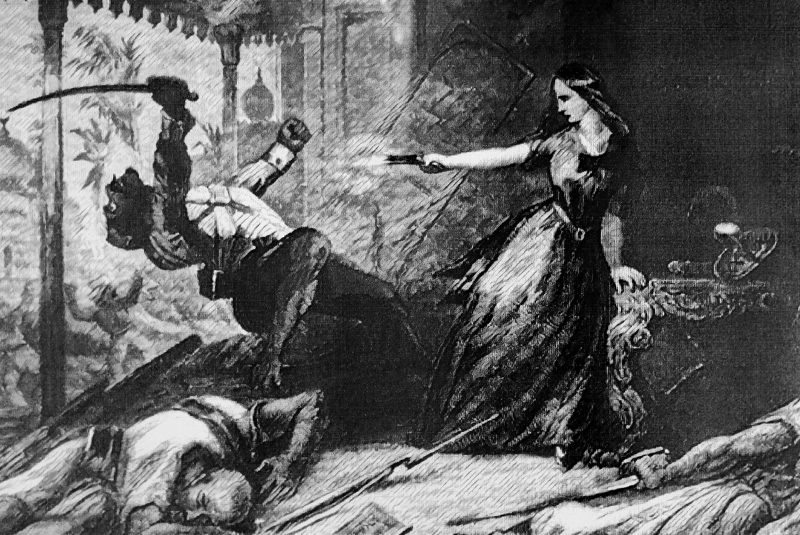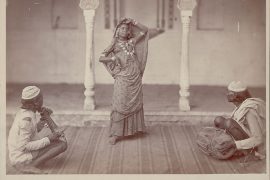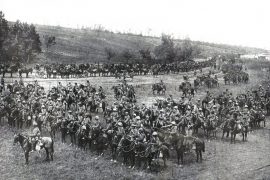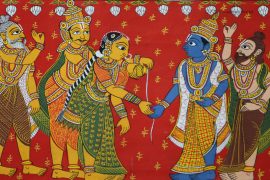In contemporary records of the Revolt of 1857, an engraving stands out. It depicts a British woman besieged on two sides by Sepoys with moustaches. With her arm outstretched, she fires a pistol at one of them – who is thrown into the air with the force of the bullet. “Miss Wheeler Defending Herself Against the Sepoys At Cawnpore” tells two stories when it comes to firearms.
One side of the story of Margaret Wheeler was that she died during the mutiny at Cawnpore, defending herself with a gun and sabre – ultimately killing herself to protect her honour. But other accounts talk of a different Miss Wheeler, one who married her captor (or rescuer – it is not known), a Sowar named Nizam Ali Khan, and settled down with him.
The first account, glorified in visual, shows a bold civilian given the ability to defend herself from a violent attack. The second says that no gun was necessary. The contrasting narratives of both echo the contemporary gun debate in India and the world today.
Today, thousands of women in Punjab line up to arm themselves like Miss Wheeler, buying a lightweight ‘for-women’ pistol manufactured by the Ordnance Factories Board. It was timely marketing, named ‘Nirbheek’, meaning ‘fearless’, in homage to victim of the 2012 Delhi Gang Rape who was also known through a word that meant fearless.
Copyright©Madras Courier, All Rights Reserved. You may share using our article tools. Please don't cut articles from madrascourier.com and redistribute by email, post to the web, mobile phone or social media.Please send in your feed back and comments to [email protected]











